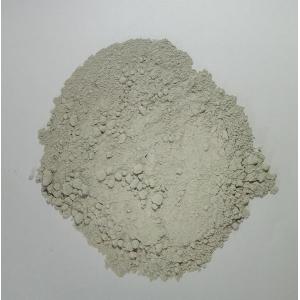Contact person: Mr. Lequan Cao
Position:
Address: 02 2nd Floor, No.1 Building, Longzeyuan Complex Building, Huilongguan Town, Changping District
Country: China
Phone: - Mobi: 01081742091
NFJ Inorganic Medium to High-Temperature Secondary Binder
Price:
NFJ Inorganic Medium to High-Temperature Secondary Binder
NFJ Inorganic Medium to High-Temperature Secondary Binder production principle: During the braking process, the stability of friction performance is maintained, replacing some resins that lose adhesiveness at high temperatures. In the use of friction materials, resins (or other organic bonding materials) undergo carbonization and decomposition as the temperature rises, leading to a decrease in bonding performance and causing brake pads to easily slip. NFJ Inorganic Medium to High-Temperature Secondary Binder gradually increases viscosity with rising temperatures, substituting for the lost bonding performance of resins; it enhances the toughness of brake pads during braking, reducing the occurrence of slipping at high temperatures. It can replace certain bonding materials.
Inorganic Medium Temperature Secondary Binder Principle:
1、Stability of Friction Performance: During braking, the secondary adhesive replaces some resin that loses its bonding properties at high temperatures, ensuring the stability of friction performance. Resins (or other organic bonding materials) tend to undergo carbonization and decomposition at elevated temperatures, leading to a reduction in bonding performance and increased risk of brake slippage. NFJ inorganic high-temperature secondary adhesive exhibits increasing viscosity with temperature, compensating for the lost bonding properties of resin and enhancing the toughness of brake pads, thereby reducing the occurrence of slippage. It can replace some bonding materials.
2、Improvement of Wear Resistance: Lnorganic High Temperature Secondary Binder has fine particles, rough surface, and a porous structure, resulting in excellent bonding properties with other friction materials. With a hardness ranging from 5-7 (Mohs hardness), it enhances the wear resistance of friction materials. It can substitute for some wear-resistant materials.
3、Easy Dispersion, Mixing, and Demolding: The fine and uniform particle size of NFJ inorganic high-temperature secondary adhesive facilitates easy dispersion when mixed with other powder materials. Its bulk density is similar to fibers and other friction materials, making it easy to blend with them. This reduces friction between friction materials and processing equipment, resulting in significant demolding effects and improving the surface density of the final product.
4、Low Thermal Expansion Coefficient: NFJ inorganic high-temperature secondary adhesive exhibits no change at 550°C.
Application Scope
Usage scenarios: resin materials, plastics, powder metallurgy
Advantages And Features
Main Functions:
1、Exhibits good plasticity, enhancing the toughness of brake pads during braking.
2、Facilitates uniform blending of synthetic friction materials during mixing.
3、Improves the toughness and impact resistance of friction materials.
4、Enhances the sealing performance of sealing materials.
5、Provides a good surface feel upon demolding.
6、Improves the wear resistance of friction materials.
Main Components:
1、High-alumina clay
2、Foam iron powder
3、Reinforcing composite agent
4、Carbon-based medium material
If you want to learn more, please visit our website.
NFJ Inorganic Medium to High-Temperature Secondary Binder production principle: During the braking process, the stability of friction performance is maintained, replacing some resins that lose adhesiveness at high temperatures. In the use of friction materials, resins (or other organic bonding materials) undergo carbonization and decomposition as the temperature rises, leading to a decrease in bonding performance and causing brake pads to easily slip. NFJ Inorganic Medium to High-Temperature Secondary Binder gradually increases viscosity with rising temperatures, substituting for the lost bonding performance of resins; it enhances the toughness of brake pads during braking, reducing the occurrence of slipping at high temperatures. It can replace certain bonding materials.
Inorganic Medium Temperature Secondary Binder Principle:
1、Stability of Friction Performance: During braking, the secondary adhesive replaces some resin that loses its bonding properties at high temperatures, ensuring the stability of friction performance. Resins (or other organic bonding materials) tend to undergo carbonization and decomposition at elevated temperatures, leading to a reduction in bonding performance and increased risk of brake slippage. NFJ inorganic high-temperature secondary adhesive exhibits increasing viscosity with temperature, compensating for the lost bonding properties of resin and enhancing the toughness of brake pads, thereby reducing the occurrence of slippage. It can replace some bonding materials.
2、Improvement of Wear Resistance: Lnorganic High Temperature Secondary Binder has fine particles, rough surface, and a porous structure, resulting in excellent bonding properties with other friction materials. With a hardness ranging from 5-7 (Mohs hardness), it enhances the wear resistance of friction materials. It can substitute for some wear-resistant materials.
3、Easy Dispersion, Mixing, and Demolding: The fine and uniform particle size of NFJ inorganic high-temperature secondary adhesive facilitates easy dispersion when mixed with other powder materials. Its bulk density is similar to fibers and other friction materials, making it easy to blend with them. This reduces friction between friction materials and processing equipment, resulting in significant demolding effects and improving the surface density of the final product.
4、Low Thermal Expansion Coefficient: NFJ inorganic high-temperature secondary adhesive exhibits no change at 550°C.
Application Scope
Usage scenarios: resin materials, plastics, powder metallurgy
Advantages And Features
Main Functions:
1、Exhibits good plasticity, enhancing the toughness of brake pads during braking.
2、Facilitates uniform blending of synthetic friction materials during mixing.
3、Improves the toughness and impact resistance of friction materials.
4、Enhances the sealing performance of sealing materials.
5、Provides a good surface feel upon demolding.
6、Improves the wear resistance of friction materials.
Main Components:
1、High-alumina clay
2、Foam iron powder
3、Reinforcing composite agent
4、Carbon-based medium material
If you want to learn more, please visit our website.
SEND INQUIRY
Please fill in fully your information to send email
CATEGORY














 Agriculture
Agriculture